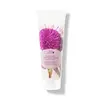What's inside
What's inside
 Key Ingredients
Key Ingredients

 Benefits
Benefits

 Concerns
Concerns

 Ingredients Side-by-side
Ingredients Side-by-side

Aloe Barbadensis Leaf Juice
Skin ConditioningRosa Centifolia Flower Water
Skin ConditioningPersea Gratissima Butter
Skin ConditioningLinum Usitatissimum Seed Oil
PerfumingGlycerin
HumectantCocos Nucifera Oil
MaskingCetearyl Alcohol
EmollientMelia Azadirachta Seed Oil
EmollientArctium Lappa Root Extract
Skin ConditioningFucus Vesiculosus Extract
EmollientCitrus Aurantium Sinensis Fiber
Emulsion StabilisingEuphorbia Cerifera Cera
AstringentUrtica Dioica Extract
AstringentMentha Piperita Leaf Extract
Skin ConditioningCalendula Officinalis Flower
Skin ConditioningTocopherol
AntioxidantPantothenic Acid
Skin ConditioningLonicera Caprifolium Flower Extract
PerfumingLonicera Japonica Flower Extract
Skin ConditioningOriganum Vulgare Leaf
Skin ConditioningThymus Vulgaris Flower/Leaf Oil
MaskingLavandula Angustifolia Flower/Leaf/Stem Oil
HumectantEucalyptus Globulus Leaf Oil
PerfumingMelaleuca Alternifolia Leaf Oil
AntioxidantAloe Barbadensis Leaf Juice, Rosa Centifolia Flower Water, Persea Gratissima Butter, Linum Usitatissimum Seed Oil, Glycerin, Cocos Nucifera Oil, Cetearyl Alcohol, Melia Azadirachta Seed Oil, Arctium Lappa Root Extract, Fucus Vesiculosus Extract, Citrus Aurantium Sinensis Fiber, Euphorbia Cerifera Cera, Urtica Dioica Extract, Mentha Piperita Leaf Extract, Calendula Officinalis Flower, Tocopherol, Pantothenic Acid, Lonicera Caprifolium Flower Extract, Lonicera Japonica Flower Extract, Origanum Vulgare Leaf, Thymus Vulgaris Flower/Leaf Oil, Lavandula Angustifolia Flower/Leaf/Stem Oil, Eucalyptus Globulus Leaf Oil, Melaleuca Alternifolia Leaf Oil
Alternatives
Ingredients Explained
These ingredients are found in both products.
Ingredients higher up in an ingredient list are typically present in a larger amount.
Aloe Barbadensis Leaf Juice comes from leaves of the aloe plant. Aloe Barbadensis Leaf Juice is best known for helping to soothe sunburns. It is also anti-inflammatory, moisturizing, antiseptic, and can help heal wounds.
Aloe is packed with good stuff including Vitamins A, C, and E. These vitamins are antioxidants, which help fight free-radicals and the damage they may cause. Free-radicals are molecules that may damage your skin cells, such as pollution.
Aloe Barbadensis Leaf Juice also contains sugars. These sugars come in the form of monosaccharides and polysaccharides, folic acid, and choline. These sugars are able to help bind moisture to skin.
It also contains minerals such as calcium, 12 anthraquinones, fatty acids, amino acids, and Vitamin B12.
Learn more about Aloe Barbadensis Leaf JuiceCocos Nucifera Oil is obtained from the kernels of the coconut fruit. In other words, this is coconut oil.
Coconut Oil is rich in fatty acids with lauric acid making up the majority of these. It also contains linoleic acid. Due to this high fatty acid content, coconut oil helps trap moisture and soften skin.
Despite being antibacterial, coconut oil may not be great for acne-prone skin. It is comedogenic and may clog pores. This ingredient may not be safe for malassezia or fungal acne.
Note: Coconut Oil should not replace your sunscreen for UV protection. Studies show it only blocks about 20% of UV.
This oil is non-volatile and has a light scent.
The term 'fragrance' is not regulated in many countries. In many cases, it is up to the brand to define this term. For instance, many brands choose to label themselves as "fragrance-free" because they are not using synthetic fragrances. However, their products may still contain ingredients such as essential oils that are considered a fragrance.
Learn more about Cocos Nucifera OilGlycerin is already naturally found in your skin. It helps moisturize and protect your skin.
A study from 2016 found glycerin to be more effective as a humectant than AHAs and hyaluronic acid.
As a humectant, it helps the skin stay hydrated by pulling moisture to your skin. The low molecular weight of glycerin allows it to pull moisture into the deeper layers of your skin.
Hydrated skin improves your skin barrier; Your skin barrier helps protect against irritants and bacteria.
Glycerin has also been found to have antimicrobial and antiviral properties. Due to these properties, glycerin is often used in wound and burn treatments.
In cosmetics, glycerin is usually derived from plants such as soybean or palm. However, it can also be sourced from animals, such as tallow or animal fat.
This ingredient is organic, colorless, odorless, and non-toxic.
Glycerin is the name for this ingredient in American English. British English uses Glycerol/Glycerine.
Learn more about GlycerinTocopherol (also known as Vitamin E) is a common antioxidant used to help protect the skin from free-radicals and strengthen the skin barrier. It's also fat soluble - this means our skin is great at absorbing it.
Vitamin E also helps keep your natural skin lipids healthy. Your lipid skin barrier naturally consists of lipids, ceramides, and fatty acids. Vitamin E offers extra protection for your skin’s lipid barrier, keeping your skin healthy and nourished.
Another benefit is a bit of UV protection. Vitamin E helps reduce the damage caused by UVB rays. (It should not replace your sunscreen). Combining it with Vitamin C can decrease sunburned cells and hyperpigmentation after UV exposure.
You might have noticed Vitamin E + C often paired together. This is because it is great at stabilizing Vitamin C. Using the two together helps increase the effectiveness of both ingredients.
There are often claims that Vitamin E can reduce/prevent scarring, but these claims haven't been confirmed by scientific research.
Learn more about Tocopherol